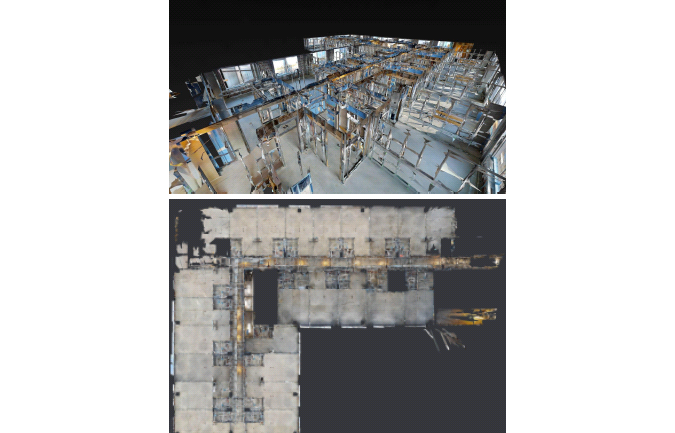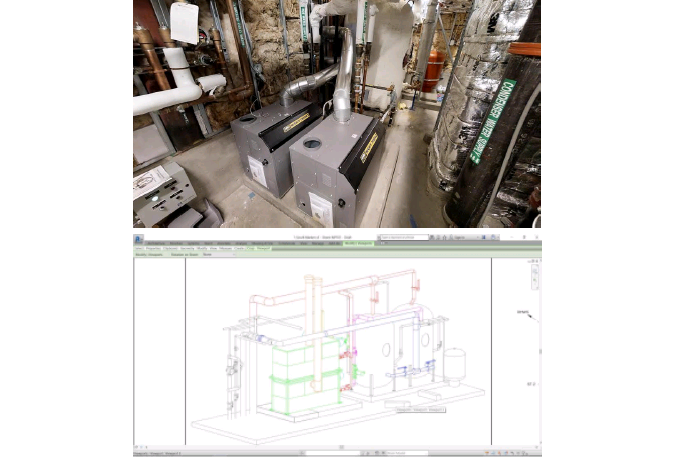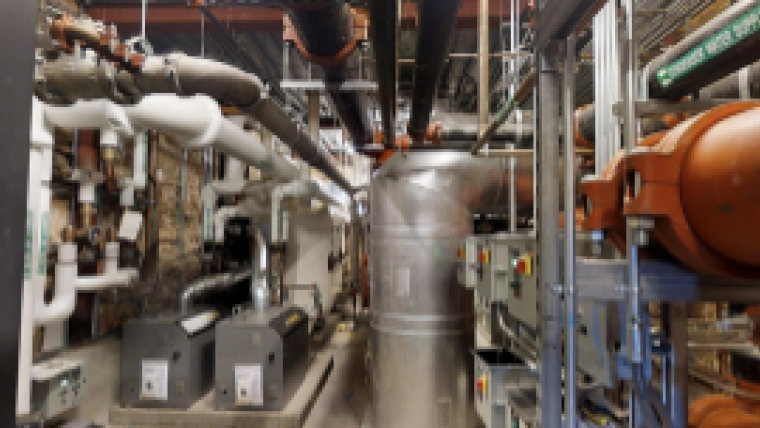Low-cost 3D Scanning Solution for High-value Deliverables
Matterport’s platform approach provides simple, economical access to immersive technology and 3D visualization
Professionals across the architectural, engineering and construction disciplines have long understood the importance of visualisation in planning and executing building projects. Visual tools such as drawings, photos and more recently 3D scanning, imagery and computer-generated models enable architects, contractors and owners to develop deep understanding of on-site conditions. Accurate information is essential in developing designs and strategies to produce great results.
(This article is brought to you by Matterport)
But high quality imagery and 3D data is not easy to come by. The need to capture and share realistic visual data has driven a series of significant technological advances.
In recent years, immersive technologies have emerged as an important new component in the AEC toolbox. These specialized tools are used to capture and present a spatially accurate 3D representation of a project space. The approach enables stakeholders to remotely experience a scene with accurate context and detail. As a result, immersive technologies are becoming a key part of efficient, precise communication and collaboration throughout the design/build/operate process.

Matterport blends technologies for 3D scanning and imaging with a cloud-based approach to data processing and information sharing. The solution creates immersive 3D models that let people feel like they are on the project site. Matterport’s approach provides high levels of detail and efficiency while significantly reducing the cost and complexity commonly associated with immersive technology solutions.
Bringing the Jobsite to the Office
Immersive technologies enable stakeholders to experience a project site without the time and expense of traveling to the site. The value extends far beyond virtual site visits.
Technologies for reality capture provide a rich environment for measurement, analysis, planning and long-term management. Comprehensive information forms the basis for faster response and decisions based on accurate, timely information. The result is lower costs, reduced risk and more efficient exchange of information.
Opportunities for immersive technology exist throughout the AEC arena. We can identify three areas where Matterport solutions are adding value:
Project Planning and Design
At the beginning of a project, architects and engineers need accurate information on existing conditions. As-built information, including 3D imagery and point clouds, are used for projects such as remodels, expansions and retrofitting new equipment into existing facilities. This holds true for residential, commercial and industrial applications.
Reality capture and immersive technologies are key enablers for today’s world of virtual teams. They produce detailed as-built information that can be easily shared among downstream systems and users. Attendees at virtual meetings can interact with the data in real time, with everyone seeing the same views of the project. The immersive solutions also enable technicians to extract additional information without revisiting a site, an important consideration in today’s world of remote projects. When questions come up during design, the answers are just a few clicks away.

Construction
Immersive technologies play a key role in reducing risk on construction projects. By capturing and sharing 3D information, contractors can conduct frequent inspections and updates with minimal disruption to the jobsite. The timely inspections help teams spot potential problems sooner and prevent expensive surprises later in the project.
Contractors can also use reality capture to produce construction documentation, such as progress milestones and quality control reports. Using 3D visualization, project stakeholders can “visit” a site from any location. Issues related to costs and scheduling for travel to project meetings are significantly reduced, and meetings can take place with greater frequency and flexibility. Shared visualization ensures clear, efficient communication and informed decisions.
Reality capture adds significant value as contractors prepare turnover packages. 3D imagery supports efficient management of final inspections and punch lists. Any issues can be tagged for resolution. Turnover packages can also provide documentation of the site during construction. For example, 3D imagery and models captured during construction can show the location of MEP components that are concealed inside finished walls. Building owners can use the information for maintenance and in planning future work that ties into the hidden fixtures.
Facilities Management
During the operational portion of a building’s life cycle, managers need accurate information on the structure and its contents. In addition to construction documents and turnover packages, Matterport’s immersive technology can supply precise information as facilities age over time, including remodels and changes to installed equipment.
This lifecycle information extends beyond images. For example, by using Matterport’s Mattertag™ Posts functionality, users can attach non-visual information directly to individual objects. Maintenance records, sourcing information, user manuals and other information—including links to documentation stored on external servers—can be accessed directly from the Matterport model.

Immersive technology can also aid in planning lifecycle activities. For example, 3D data can not only confirm that new equipment will fit into a space but it can also help in planning the installation. Contractors can use 3D models in determining the best routes for moving and removing large items through the facility.
Eliminating Barriers
Immersive technology provides important benefits, but it comes with some challenges. Workflows for 3D data capture, processing and delivery have traditionally been costly. Field hardware such as laser scanners are expensive and require highly trained personnel. In the office, data processing is time consuming and relies on dedicated technicians operating complex software. When the processing is completed, downstream users may need specialized tools to view and utilize the point clouds and images. These barriers have prevented many organizations from adopting 3D data capture and visualization.
Matterport addresses these concerns in three ways. First, the Matterport solution uses a simple, low-cost approach to capture detailed images and 3D data on a jobsite. The Matterport Pro2 3D camera completes a scan in less than 30 seconds. For many sites, data capture that requires hours using a laser scanner can be completed quickly with Matterport. In comparison testing, the Matterport system can reduce capture time on site by up to 75 percent over manual methods. The system requires minimal training and can be operated by trades workers or interns without tying up high cost professional staff. The Matterport Capture app running on an iPad tablet guides the operator through the process. Before leaving the jobsite, the Capture app provides immediate confirmation that the data is complete.

Second, Matterport manages and processes the data to produce high-quality results. When data capture is complete, the Capture app makes it easy to upload the field data to Matterport Cloud, where it is analyzed and processed into 3D images and point clouds.
This step represents significant time and cost savings over conventional scanning and photogrammetry. Matterport users can produce comprehensive information while bypassing the need to invest in expensive software and training. While conventional approaches often require many operator-hours to process data and produce clean point clouds and imagery, the Matterport solution is completely hands off. A typical Matterport project is ready for viewing and delivery roughly two hours after data is uploaded, with no operator interaction.
Finally, the Matterport solution includes tools and output that extend the immersive experience to downstream users. The system allows stakeholders to conduct virtual walkthroughs and see jobsite conditions from any angle or location. Simple browser-based viewers and measurement tools enable users to easily extract information.
For more detailed analysis, Matterport output includes point clouds, imagery, floor plans and reflected ceiling plans. Matterport uses common formats to ensure smooth data export to widely-used BIM and design systems including Autodesk® ReCap™, Revit® and SketchUP.
To further extend the use of immersive technology, Matterport has opened its solution for customization. Its hardware-agnostic strategy supports the use of third party equipment such as the Leica BLK360 scanner.
In the office, developers can use Matterport’s software development kit (SDK) to create customized applications running on the Matterport platform. The approach enables users to utilize Matterport’s low-cost 3D models and imagery in task-specific software.

The High Value, Low-Cost Game Changer
The value of immersive technologies—cost savings and productivity realized through accuracy and shared visualization—is attracting attention across and beyond the AEC community. As public awareness of the technology continues to grow, expectations will rise and 3D visualization will become the norm. Project owners will rely on their architects, engineers and contractors to provide timely, comprehensive 3D information.
However, many AEC providers may encounter barriers to reality capture: expense, complexity and time. These concerns have so far pushed much of the work to large AEC firms, surveyors and specialized service providers.
Matterport has attacked this problem through its simple, automated approach to reality capture, data processing and information sharing. The Matterport platform enables a growing variety of AEC professionals to provide high-value deliverables faster and at a lower cost than other technologies. The door to 3D information is wide open.
John Chwalibog is director of AEC Solutions at Matterport Inc.

Value staying current with geomatics?
Stay on the map with our expertly curated newsletters.
We provide educational insights, industry updates, and inspiring stories to help you learn, grow, and reach your full potential in your field. Don't miss out - subscribe today and ensure you're always informed, educated, and inspired.
Choose your newsletter(s)
























